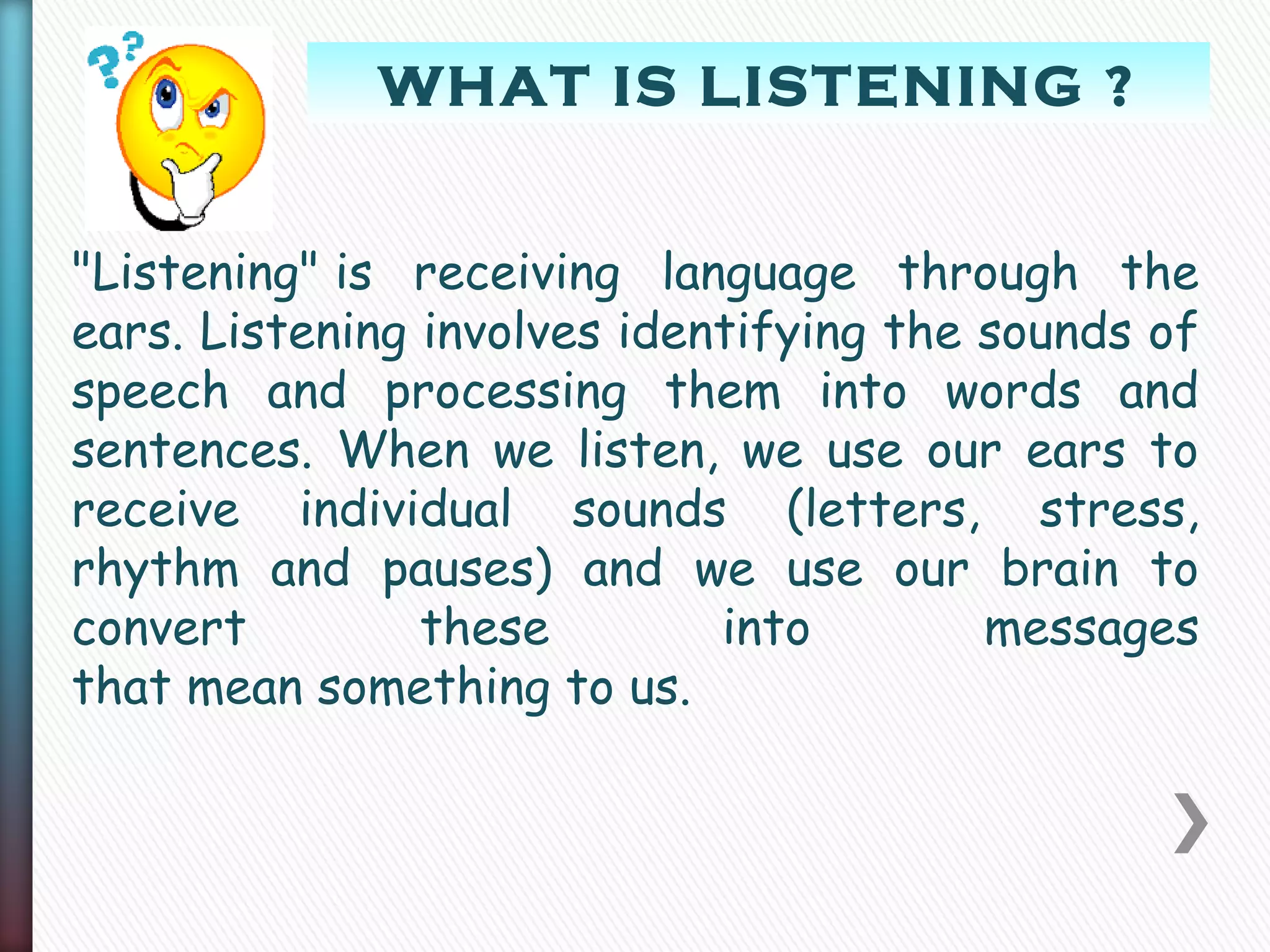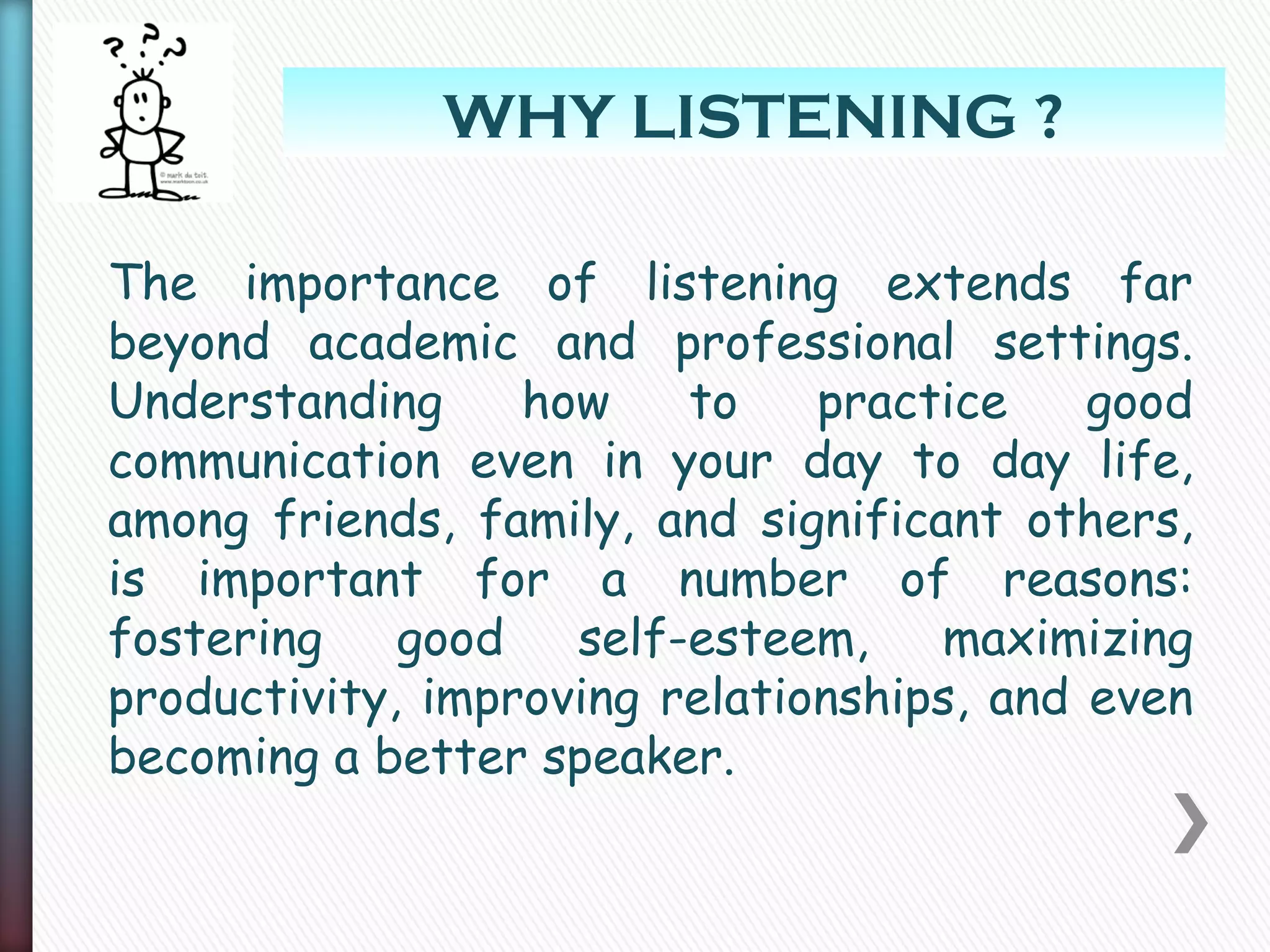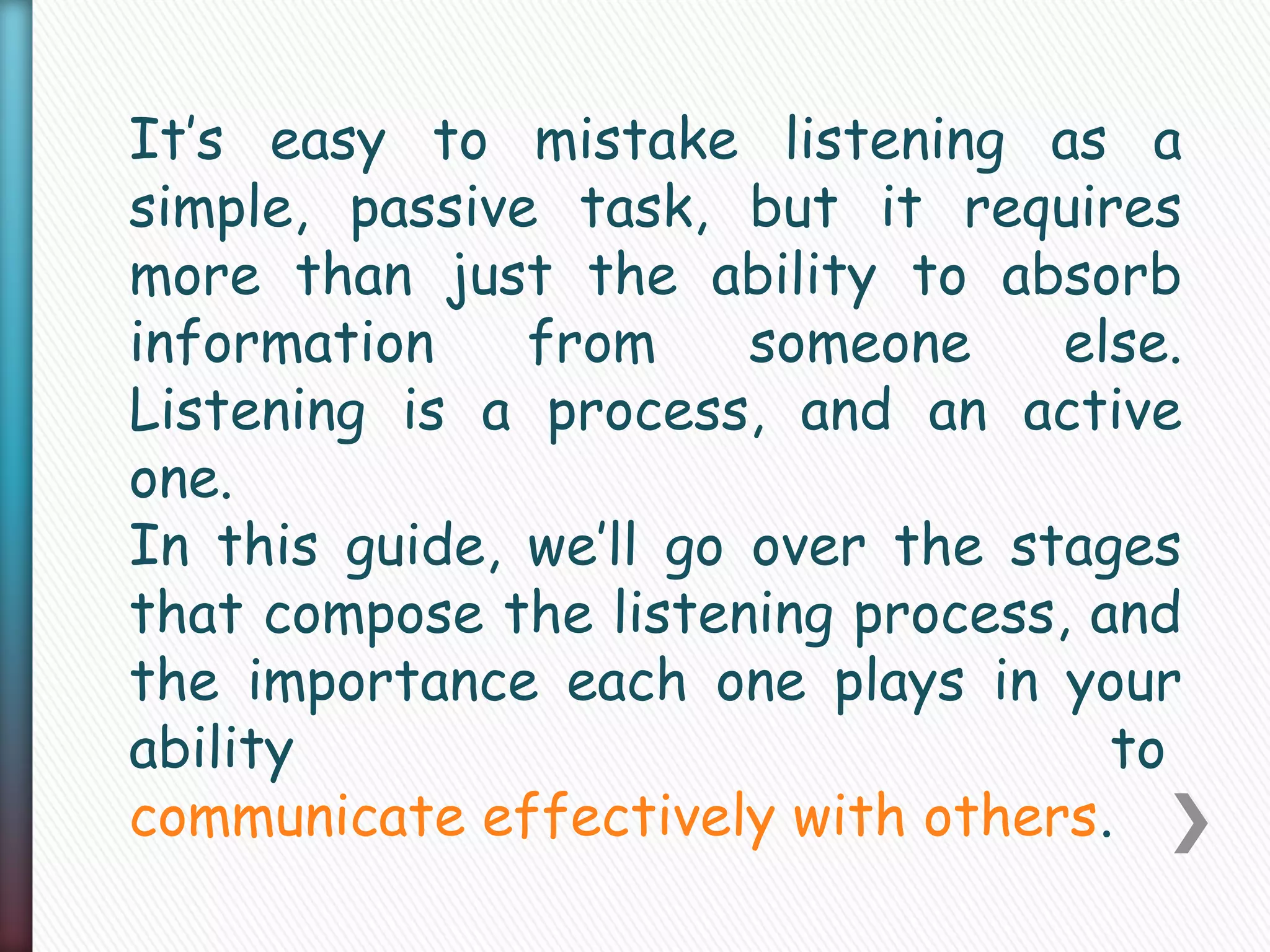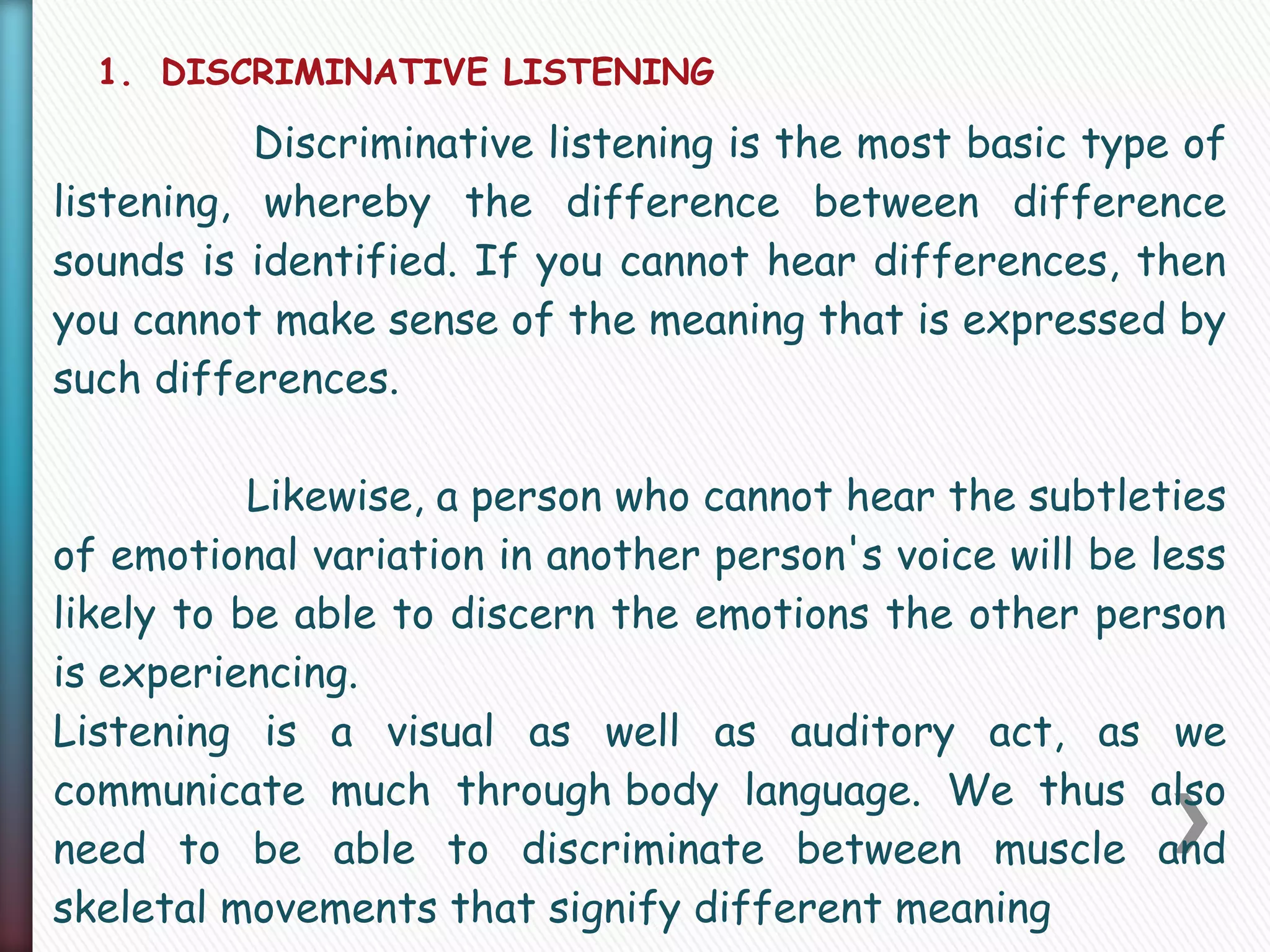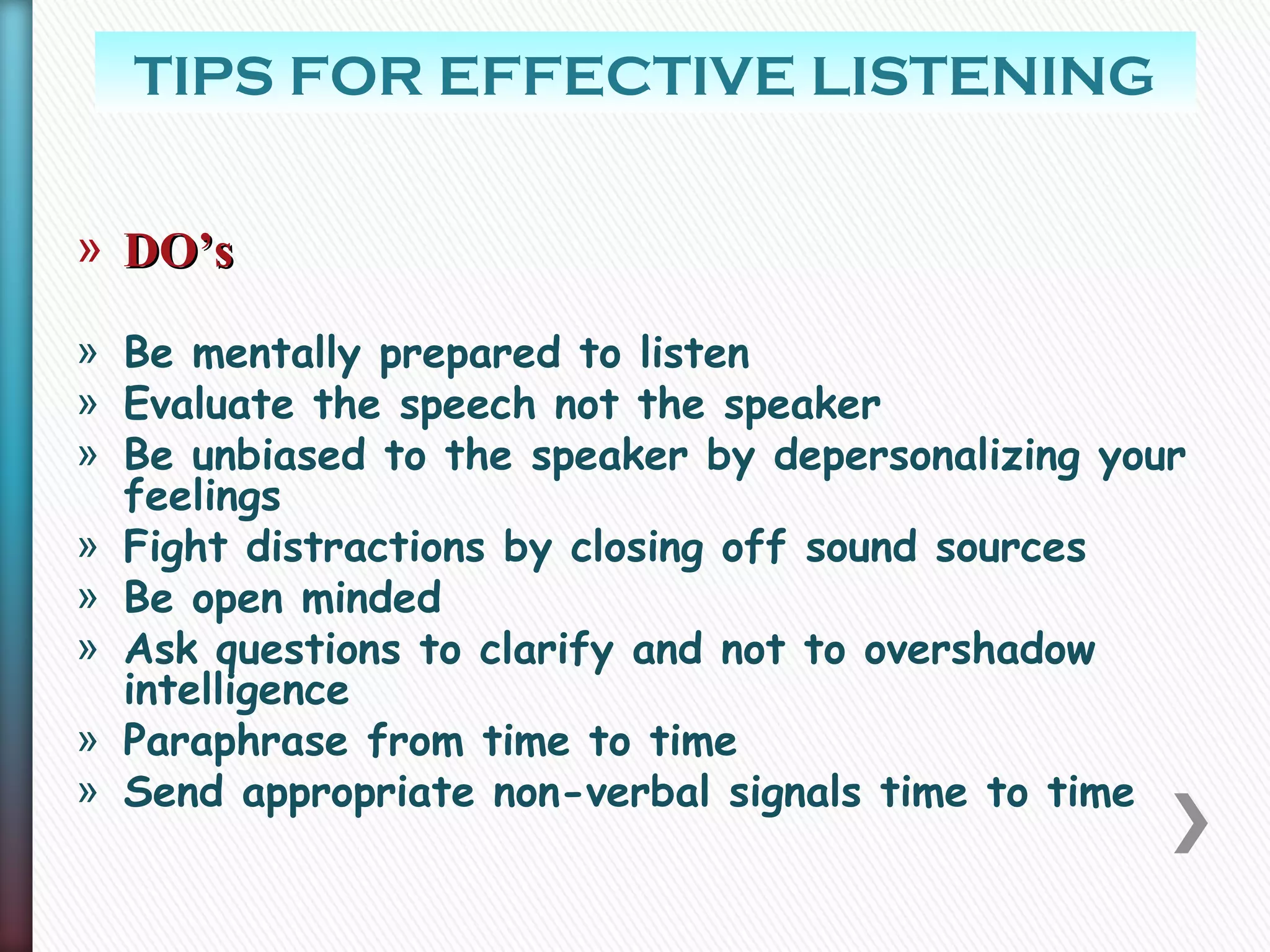This document discusses different types of listening and tips for effective listening. It outlines 11 types of listening including discriminative, comprehension, critical, biased, evaluative, appreciative, sympathetic, empathetic, therapeutic, dialogic, and relationship listening. It also describes the characteristics of a good listener using the LARSEN method and provides dos and don'ts for effective listening such as being mentally prepared, avoiding distractions and interruptions, asking clarifying questions, and focusing on the content not the speaker. The conclusion emphasizes that listening involves more than just the ears and the importance of being a good listener in conversations.



